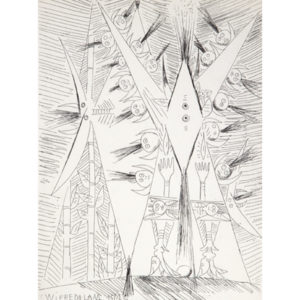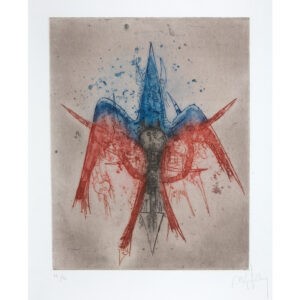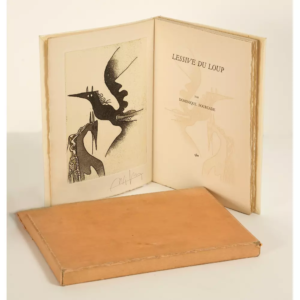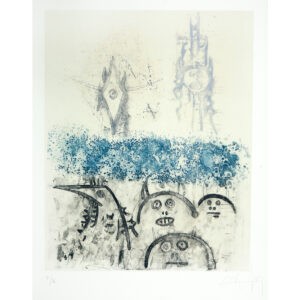Lam, Wifredo
Close to Surrealism and the CoBrA artists, combining modernism with the influence of African and Caribbean symbols, Wifredo Lam's work also bears witness to a strong political commitment, triggered by his return to Cuba and his dismay at the misery of black people under the Batista regime. Read the biography
9 results displayedSortedfrom newest to oldest
-

Le Miroir du merveilleux
Ernst; Braumer; Matta; Lam; Herold
2 500€
-

Journeys through painting (bound)
Wifredo Lam
1 950€
-

Untitled, In XXème Siècle n°52
Wifredo Lam
1 200€
-

Images IX
Wifredo Lam
2 000€
-

Journeys through painting
Wifredo Lam
1 950€
-

Wolf laundry
Wifredo Lam
1 800€
-

Scattered leaves
Collective
6 000€
-

Untitled, In XXème Siècle n°52
Wifredo Lam
SOLD
-

Images V
Wifredo Lam
SOLD
Biography
Born in Sagua La Grande, Cuba, in 1902, Wifredo Lam received a scholarship from the municipality of his native city to study in Europe in 1923.
At the age of 21, he left for Spain, where he spent 14 years. He trained as a painter in Madrid, frequenting the Prado Museum and the Archaeological Museum. In 1938, Lam arrived in Paris and met Pablo Picasso. Picasso introduced him to many of the artists of the time, including Georges Braque, Henri Matisse, Fernand Léger and Joan Miró. Lam held his first solo exhibition in 1939. He became close to the Surrealists and illustrated André Breton's poem Fata Morgana.
He then returned to Cuba and met Aimé Césaire during the crossing. Back in his homeland, Lam became interested in Afro-Cuban religious rituals, which inspired his art enormously. His work also bears witness to a strong political commitment, triggered by his return to Cuba and his dismay at the misery of black people under the Batista regime. He exhibited at MoMA in the 40s and caused a scandal with his painting La Jungle. In the 1960s, he took up printmaking, participating in the creation of portfolios such as René Char's Le Rempart de brindilles (1963) and Aimé Césaire's L'Annonciation (1969). He continued this engraving work until his death in 1982.
